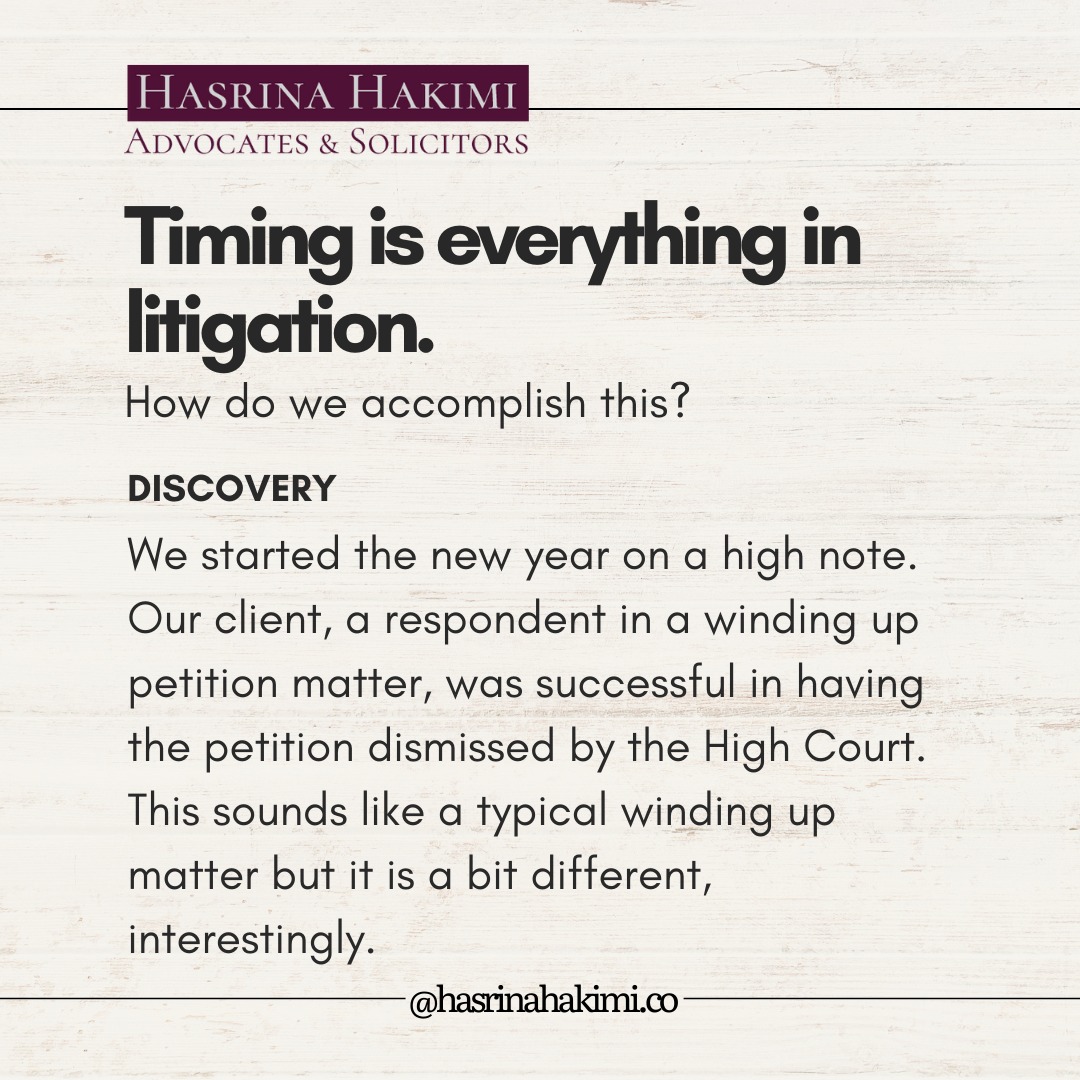We started the new year on a high note. Our client, a respondent in a winding up petition matter, was successful in having the petition dismissed by the High Court. This sounds like a typical winding up matter but it is a bit different, interestingly.
The Petitioner as plaintiff filed a claim for a sum of alleged debt in the Sessions Court against the Respondent as defendant in October 2023. The Respondent disputed the claimed sum in the defence. In December 2023, the Petitioner filed a summary judgment application against the Respondent and in May 2024, the Sessions Court judge dismissed the summary judgment application. Parties were directed to proceed to trial.
Sometime in February 2024, the Petitioner initiated winding up proceedings in the Insolvency Court against the Respondent for the same amount of alleged debt as claimed in the Sessions Court suit notwithstanding that, at the material time, the outcome of the summary judgment application was still pending. The Respondent similarly disputed the petitioned sum in the Affidavit in Opposition in the winding up proceedings.
Up to today, trial for the Sessions Court suit has not commenced. The winding up petition came for hearing in November 2024 and the decision was delivered in January 2025. At the winding up petition hearing, the Petitioner alleged that there was an admission of the debt by the Respondent in the Affidavit in Opposition and insisted that the petition ought to be allowed despite having admitted that the summary judgment application had earlier been dismissed by the Sessions Court. The learned High Court judge dismissed the winding up petition with costs.
It is important to remember that a winding up petition must be based on a clear and undisputed debt. It is no wonder that a court judgment in hand is gold. Had the summary judgment application be allowed by the Sessions Court, the winding up petition could have been decided the other way. Unfortunately, the Petitioner is now saddled with costs and legal fees for a failed winding up proceedings. The Petitioner could have waited for the decision of the summary judgment application before initiating the winding up proceedings. Some old timers would say that it is better to be patient and wait for the opportune moment to strike. Timing is everything.
